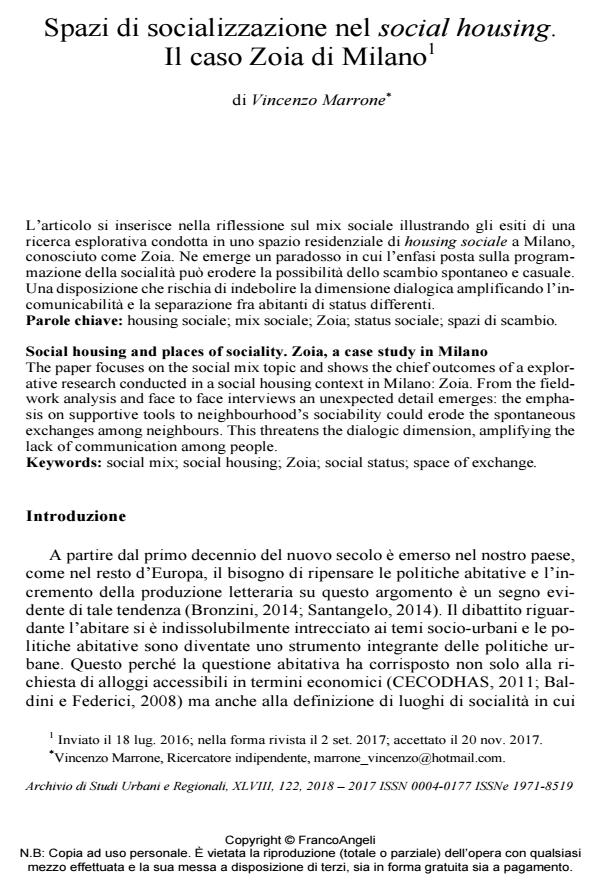Spazi di socializzazione nel social housing. Il caso Zoia di Milano
Titolo Rivista ARCHIVIO DI STUDI URBANI E REGIONALI
Autori/Curatori Vincenzo Marrone
Anno di pubblicazione 2018 Fascicolo 2018/122
Lingua Italiano Numero pagine 22 P. 53-74 Dimensione file 128 KB
DOI 10.3280/ASUR2018-122004
Il DOI è il codice a barre della proprietà intellettuale: per saperne di più
clicca qui
Qui sotto puoi vedere in anteprima la prima pagina di questo articolo.
Se questo articolo ti interessa, lo puoi acquistare (e scaricare in formato pdf) seguendo le facili indicazioni per acquistare il download credit. Acquista Download Credits per scaricare questo Articolo in formato PDF

FrancoAngeli è membro della Publishers International Linking Association, Inc (PILA)associazione indipendente e non profit per facilitare (attraverso i servizi tecnologici implementati da CrossRef.org) l’accesso degli studiosi ai contenuti digitali nelle pubblicazioni professionali e scientifiche
L’articolo si inserisce nella riflessione sul mix sociale illustrando gli esiti di una ricerca esplorativa condotta in uno spazio residenziale di housing sociale a Milano, conosciuto come Zoia. Ne emerge un paradosso in cui l’enfasi posta sulla programmazione della socialità può erodere la possibilità dello scambio spontaneo e casuale. Una disposizione che rischia di indebolire la dimensione dialogica ampli-ficando l’incomunicabilità e la separazione fra abitanti di status differenti.
Parole chiave:Housing sociale; mix sociale; Zoia; status sociale; spazi di scambio.
- Cohousing in Italy Manuela Maggio, pp.25 (ISBN:978-3-031-83276-5)
Vincenzo Marrone, Spazi di socializzazione nel social housing. Il caso Zoia di Milano in "ARCHIVIO DI STUDI URBANI E REGIONALI" 122/2018, pp 53-74, DOI: 10.3280/ASUR2018-122004